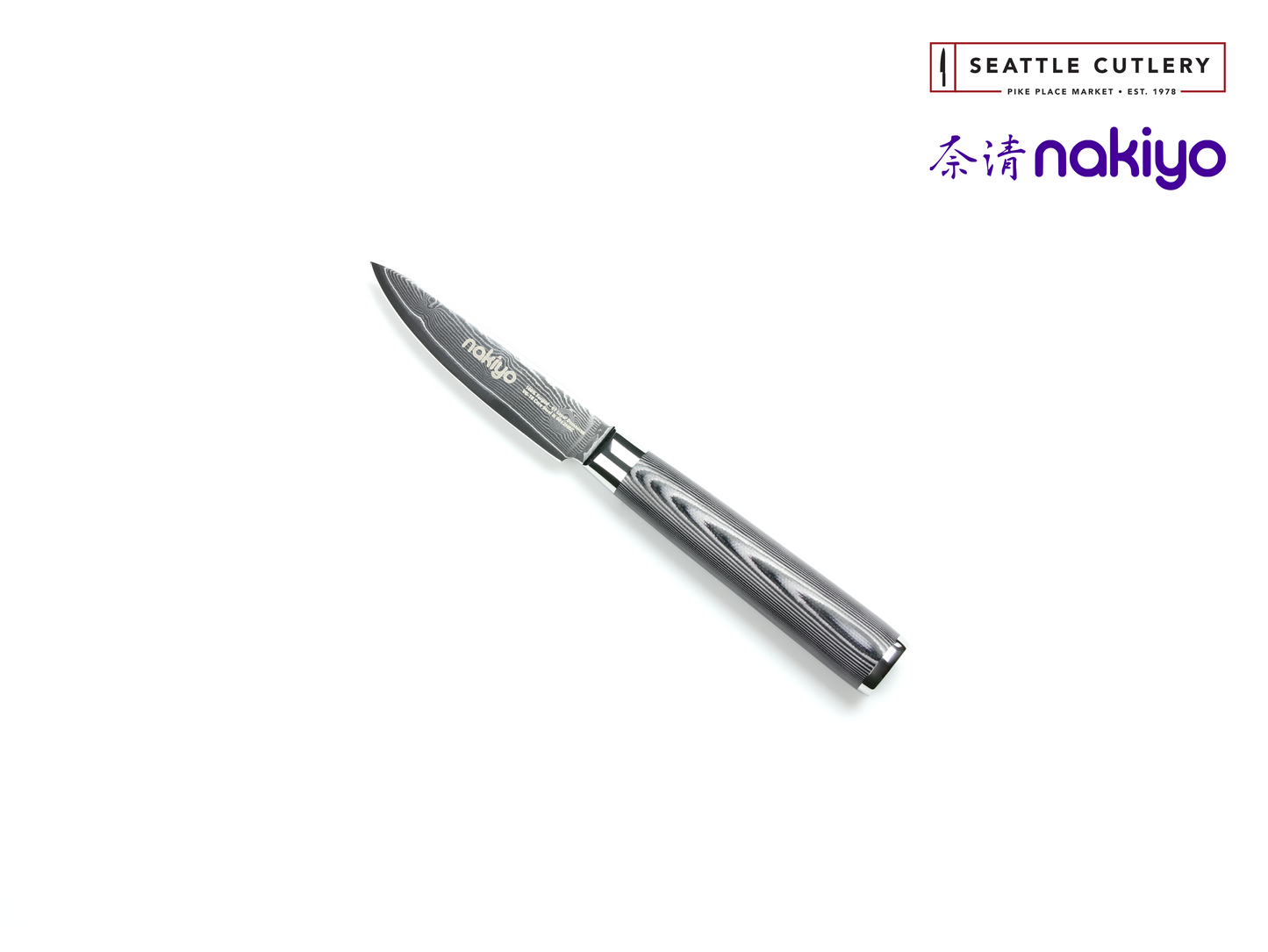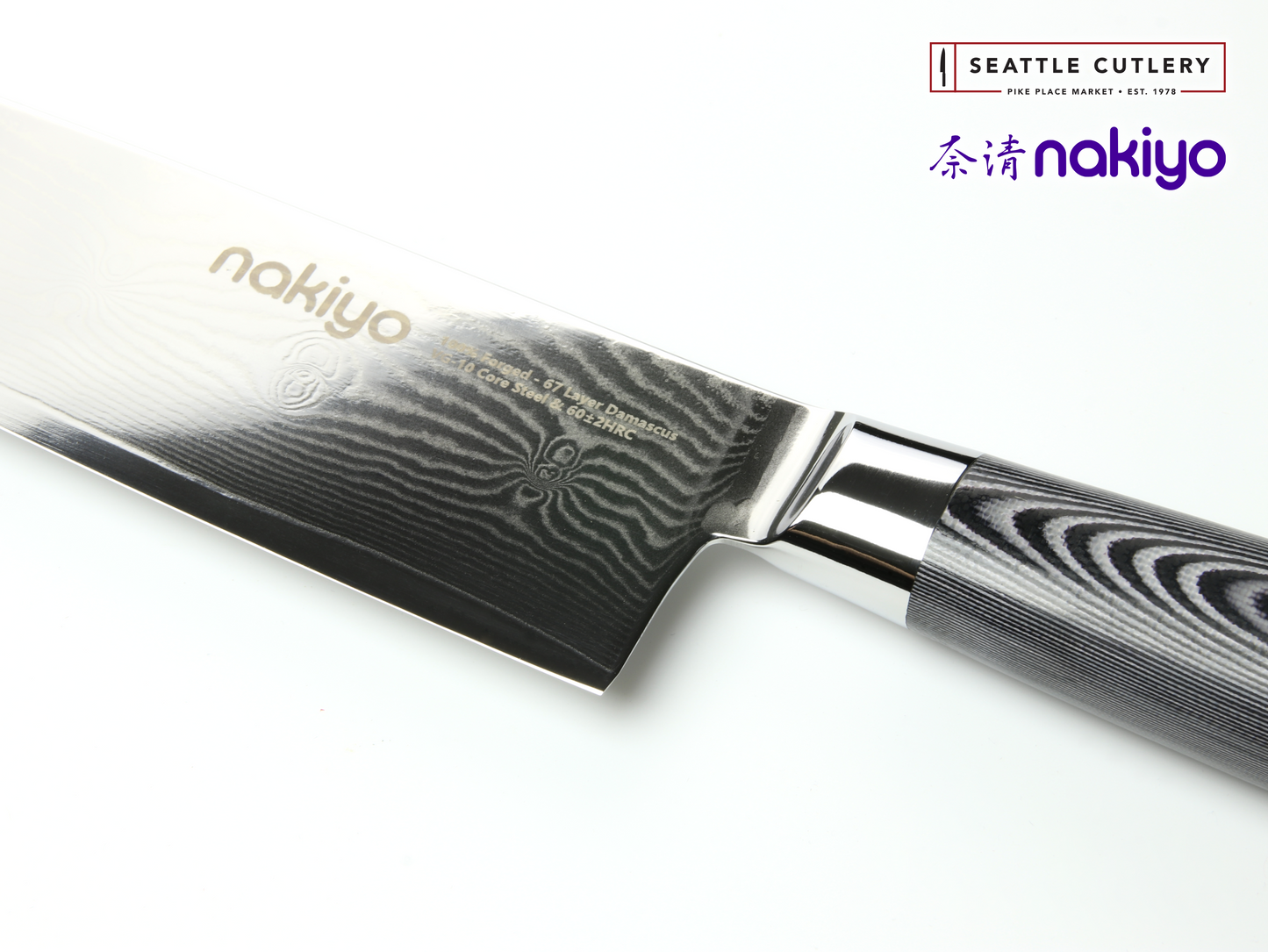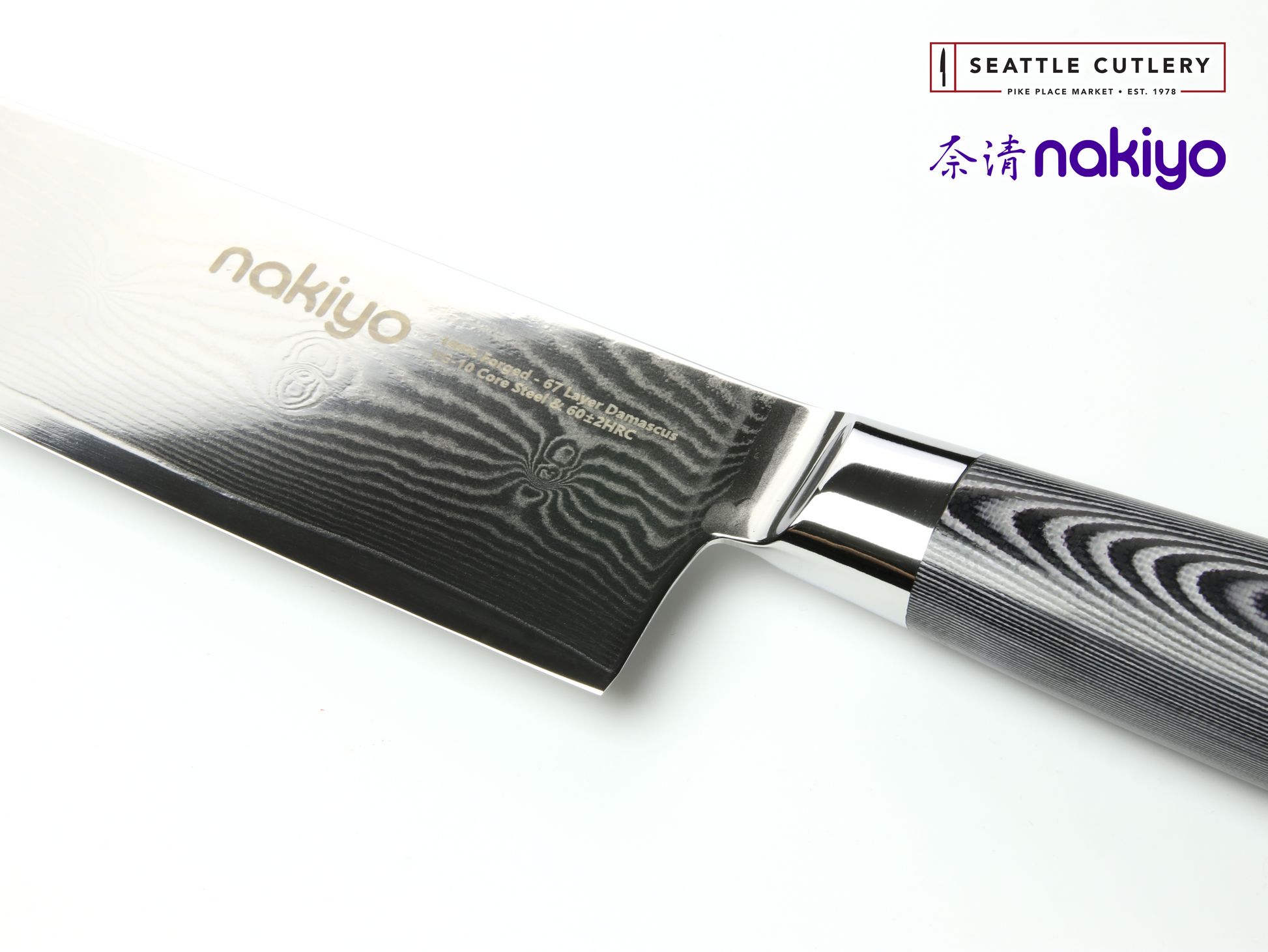Nakiyo Elite 3.5" Paring Knife
Nakiyo Elite 3.5" Paring Knife
In stock
Couldn't load pickup availability
Share
Nakiyo Elite is a hybrid series that combines Japanese steel and style with European balance and construction to create a knife that cuts like a traditional blade but feels solid and familiar in the hand. Made with hard, stainless Damascus steel and ultra-durable micarta, Elite is built to withstand the rigors of the home or commercial kitchen.
Function
Function
The paring knife is best suited for paring fruits and produce due to its short, agile blade. The knife’s narrow point also makes it useful for tasks such as deveining shrimp, coring fruits, and precisely removing spots.
Blade
Blade
Nakiyo Elite blades are forged from 67-layer Damascus steel, which is made by repeatedly folding and forge welding two stainless steels with different carbon contents. The resulting material bears the elegant, wavelike pattern produced by its many fine layers—a testament to its strength, flexibility, and durability. This Damascus envelops a core of harder VG-10 cobalt alloy steel, a high-carbon stainless steel developed in Japan. Hardened to a Rockwell hardness of 60±2, it accommodates a long-lasting, razor-sharp edge.
Handle
Handle
Nakiyo Elite handles are made from ultra-durable micarta, a synthetic material composed of epoxy-infused linen. Alternating layers of black and white fabric give the handle an eye-catching look reminiscent of wood grain, which is accented by a ferrule and endcap of stainless steel. Unlike traditional Japanese knives, which have lightweight handles, the dense handle material and full tang lend the Damascus Elite series a heft akin to that of German knives.
Specifications
Specifications
Length
90 mm (3.5") blade, 205 mm (8.1") overall
Weight
90 g (3.2 oz)
Blade Material
67-layer Damascus with VG10 cobalt alloy core
Edge
Double bevel
Handle Material
Linen micarta with steel ferrule and end cap
Handle Shape
Oval
Care & Maintenance
Care & Maintenance
Wash your knife by hand with warm water, soap, and a soft sponge or dish towel. Avoid prolonged exposure to heat or moisture. Remember—there's no such thing as a dishwasher-safe knife!
To prevent edge chips, avoid impacts with hard surfaces. Don't chop bones, shells, or frozen food, and cut only on a wood or bamboo cutting board. Don't leave your knife where the edge might come in contact with something hard, such as in a sink or a drawer with other knives.
Store your knife so that the edge is protected from abrasion and impact. We recommend a magnetic stand, but you can also use a knife block with horizontal slots. If you must keep it in a drawer, use an edge protector. See our storage options here.
Sharpening
Sharpening
Sharpen on a whetstone at an angle of 15° per side and finish at a grit of at least 1000, but preferably 3000 or higher. Pull-through and electric sharpeners should be avoided for Japanese knives.
Alternatively, you can have your knives sharpened professionally. Seattle Cutlery offers a state-of-the-art, mail-in sharpening service for our own customers, but other services may be available to you locally.
Honing steels are not necessary to maintain Japanese knives. You can optionally touch up the edge with a high-grit sharpening stone or a ceramic sharpening rod.
Warranty
Warranty
All Nakiyo, Tojiro, Sabatier, and SeaCut products sold by Seattle Cutlery are covered by our lifetime warranty against defects in materials and workmanship. If you follow our care and maintenance advice and your knife ever fails during honest use, we will gladly repair or replace it. Our warranty does not cover regular wear and tear or damage due to misuse, but we may still be able to help in some cases.
Returns
Returns
Any item in original, unused condition may be returned within 30 days for any reason. Shipping charges are non-refundable. Read our full refund policy here.




